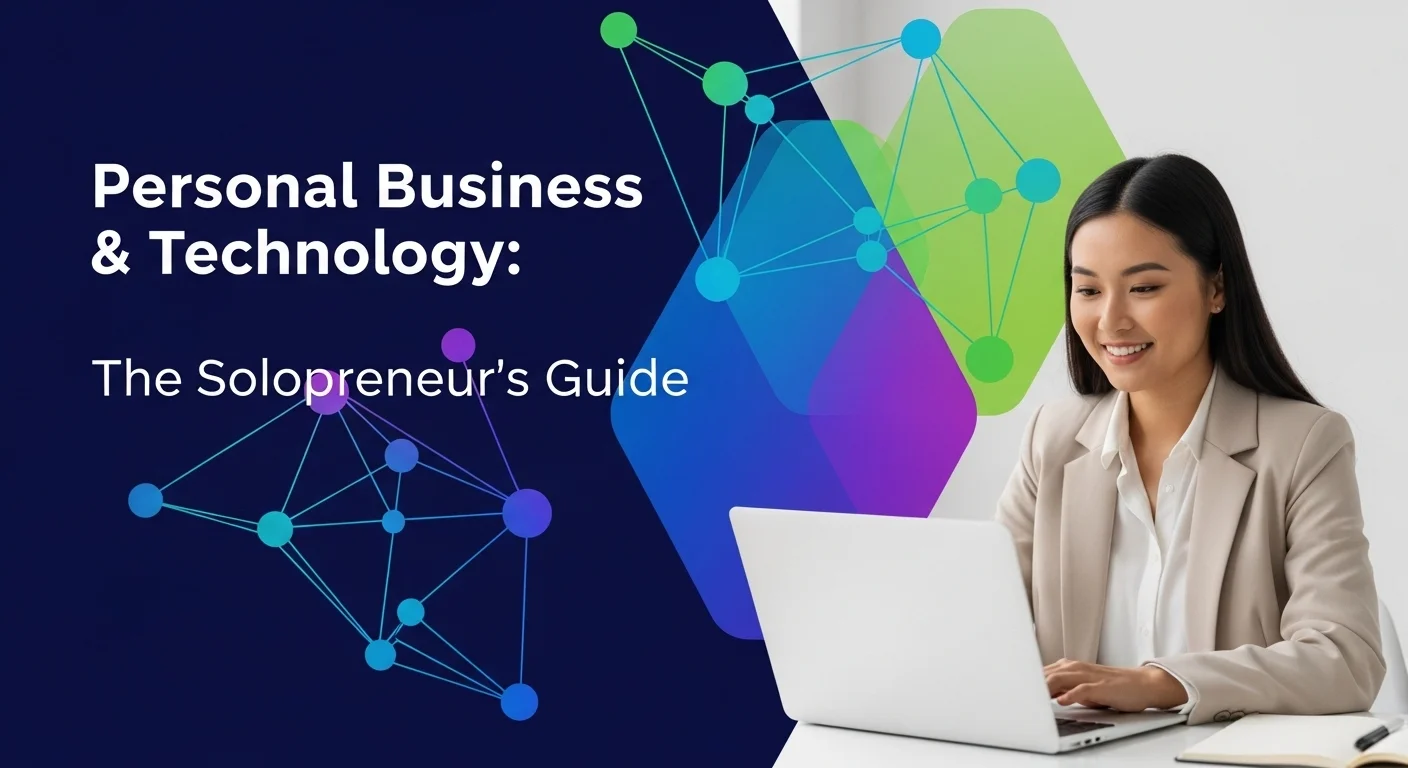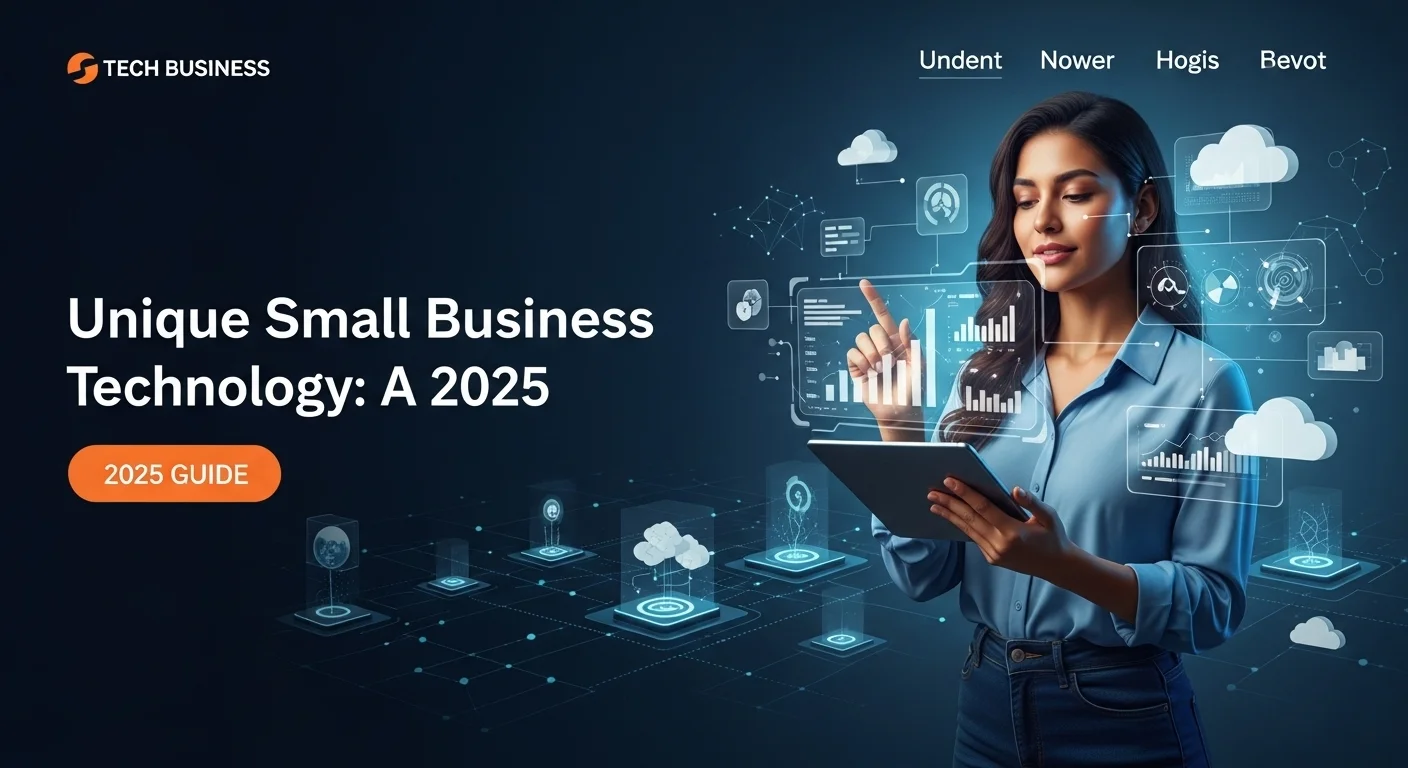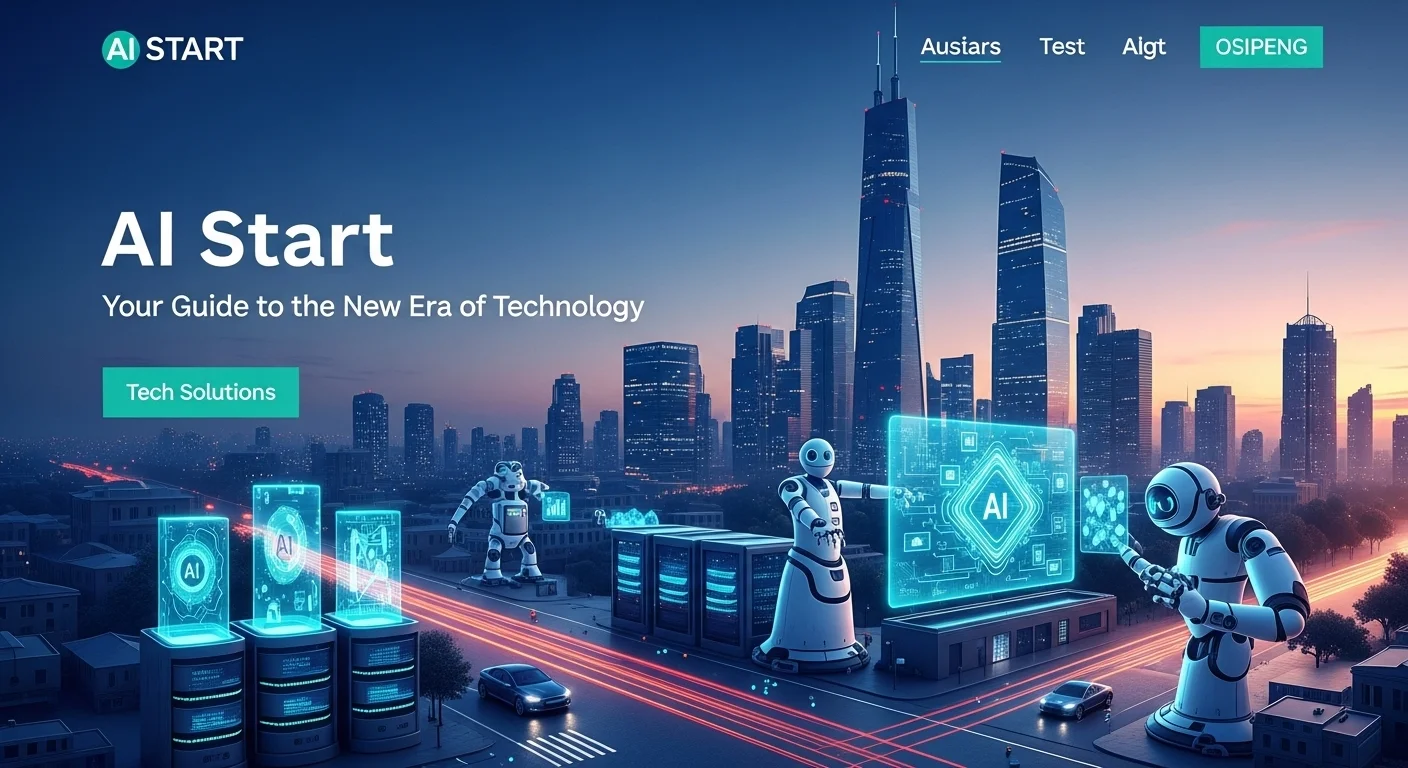The Solopreneur's Tech Playbook: Building a Powerful Personal Business

Executive Summary
The whole idea of a 'personal business' has completely changed. I've seen it firsthand. It's no longer just about being a local freelancer; it's about building a lean, global-reaching venture, often run by just one or two people. What made this possible? Technology. It's the great equalizer. This guide is my way of sharing what I've learned from years of helping solopreneurs build their dreams. We'll ditch the complex jargon and get straight to the point: how tools like cloud computing, AI, and smart software can become your best employee. We'll cover everything from brilliant one-person business ideas to the exact tech you need to manage everything yourself. Think of this as your roadmap to building a resilient, automated, and secure business that can not only compete with the big players but also run circles around them. In this new age of work, technology is your ultimate co-founder.
Table of Contents
Table of Contents
- What is a Personal Business and Why is Technology Key?
- The Tech That Kicked Off the Solopreneur Revolution
- Real-World Examples: Your Business in Action
- The Big Benefits of a Tech-Forward Approach
- Your Step-by-Step Guide to Business Tech Solutions
- Building Your Core Tech Stack
- Putting AI and Automation to Work for You
- Cybersecurity: Protecting Your Digital Assets
- Pro Tips and Strategies for Mastering Your Tech
What is a Personal Business and Why is Technology Key?
When I started my career, a 'personal business' meant a corner shop or a local craftsman. Today, it’s a whole different ball game. A personal business is a powerhouse venture run by a solopreneur or maybe two partners. We're talking about the freelance consultants, the digital creators, the e-commerce wizards, and even the folks building tiny software companies. The goal isn't necessarily to hire a huge team. Instead, the focus is on smarts, efficiency, and a lifestyle that works, all powered by technology instead of people. This isn't some happy accident; it's the result of a tech revolution that put the power of a corporate IT department into a laptop. This blend of personal drive and incredible technology is changing what it means to be an entrepreneur, and I'm here for it.
The Tech That Kicked Off the Solopreneur Revolution
Technology is the foundation of every successful modern personal business I've seen. Years ago, you needed a mountain of cash for an office, servers, software, and staff. Now? Those walls have been torn down by digital tools that are cheap, powerful, and easy to access. This is the most important economic shift I've witnessed in my lifetime. Take cloud computing. It completely removed the need for bulky, expensive servers. Services like Google Workspace or Microsoft 365 give you top-tier tools for a small monthly fee, perfect for a business just starting out. This means you can manage a massive operation from anywhere with an internet connection. It’s a game-changer that makes countless one-person business ideas not just a dream, but a profitable reality.
Then there's artificial intelligence (AI). It's not sci-fi anymore; it's your new intern. For a solopreneur, AI tools can automate an incredible number of tasks. Think of AI as your marketing assistant, writing ad copy and social media updates. Or your 24/7 customer service rep, with chatbots answering questions while you sleep. It can even be your business analyst, spotting sales trends you might have missed. For anyone exploring personal business ideas, AI is like having a secret team that multiplies your efforts. It frees you from the grunt work so you can focus on strategy and creativity. One person can now achieve what used to take a whole department.
Real-World Examples: Your Business in Action
Let’s talk about how this actually works in the real world. It's not just theory; I see people building these businesses every day.
- The Freelance Designer: A classic single person business idea. Their toolkit probably includes Adobe for design, a sleek Squarespace portfolio, Calendly to schedule calls without the back-and-forth emails, and QuickBooks for easy invoicing. They use Dropbox to send huge files to clients in seconds. They are a one-person creative agency, professional and buttoned-up.
- The E-commerce Dropshipper: This person runs a global retail store and might never touch a single product. They use Shopify for their storefront, connect with suppliers through an app, and use a suite of marketing tools to find customers. AI writes their product descriptions, Google Analytics tells them who's visiting, and Buffer keeps their social media active. This entire operation is run from a laptop.
- The Two-Person Tech Consultancy: When you're looking at 2 person business ideas, collaboration becomes king. A pair of IT consultants I know use Google Workspace for everything, Slack for instant chats, and Asana to manage who's doing what. It keeps them perfectly in sync. For their actual work, they use tools like GitHub to code together. Their tech makes them look and feel like a much larger, coordinated firm.
The key takeaway here is that technology isn't just a background helper; it's a strategic weapon. The right tools let a personal business operate with the efficiency and polish of a much larger company. Many modern 1 person business ideas are built entirely on a specific tech platform or niche.
The Big Benefits of a Tech-Forward Approach
So why is this model so important? First, it's incredibly nimble. A personal business can change direction or adopt new tech overnight. There's no red tape. If a new AI tool comes out that could change their marketing, a solopreneur can start using it that same afternoon. This speed is a huge advantage.
Second, the low costs are a lifesaver. Without rent, payroll, and expensive software contracts, these businesses are tough. They can survive slow months and often become profitable with just a handful of clients. This frees up cash to invest in growth.
Third, you get a real, human connection with customers. In a personal business, the founder *is* the brand. People love talking directly to the person in charge. It builds trust and loyalty that big corporations can only dream of.
Finally, this movement empowers people to build careers on their own terms, turning their unique skills into a livelihood. For anyone with great personal business ideas, the message is loud and clear: the gates are open. The tools are here. The only thing standing in your way is vision and the will to learn.

Your Step-by-Step Guide to Business Tech Solutions
Starting a personal business today is less about having a revolutionary idea and more about having a smart plan for your technology. Trust me, a solid tech foundation is what separates the businesses that thrive from those that struggle. Let's walk through building your digital toolkit, from the ground up, so you can launch and scale a successful one or two-person company.
Building Your Core Tech Stack: The Digital Foundation
Your 'tech stack' is just a fancy term for the collection of software that runs your business. The goal here is to be lean, integrated, and smart with your money. Here’s what I consider the absolute essentials.
1. Your Digital Home: Domain, Hosting, and Website
Your website is your 24/7 storefront. First, grab a domain name that feels like your brand. Then, pick a platform to build on.
- All-in-One Builders (Shopify, Squarespace, Wix): I recommend these for anyone starting out. They package everything you need—hosting, design, e-commerce—into one simple subscription. If you're selling products, go with Shopify. If you're a consultant or creative who needs a beautiful portfolio, Squarespace is fantastic. They're perfect for getting many one person business ideas off the ground fast.
- Self-Hosted WordPress: If you want total control, WordPress is the way to go. You'll need hosting from a provider like SiteGround or Kinsta. It's a bit more of a learning curve, but you can customize absolutely everything. It's my top pick for businesses that rely heavily on content.
2. Your Virtual Office: Productivity and Communication
To be efficient, you need your communication to be seamless. A suite like Google Workspace or Microsoft 365 is non-negotiable in my book. For a small monthly fee, you get a professional email, cloud storage, and all the office apps you need. For real-time chat, especially for 2 person business ideas, a tool like Slack is a must-have to keep conversations organized and out of your inbox.
3. Your Control Center: Project and Task Management
To avoid feeling overwhelmed, you need a system. These tools help you see what needs to be done and when.
- Trello: Simple, visual, and intuitive. It's like a digital whiteboard with sticky notes. Perfect for managing basic projects.
- Asana: A step up from Trello. It’s better for complex projects and is my go-to recommendation for service businesses or 2 person business ideas where you need to assign tasks to each other.
- Notion: This is for people who love to build their own systems. It combines notes, tasks, and databases. It takes time to learn, but it's incredibly powerful.
4. The Money Hub: Financial Management
Don't mess around with spreadsheets for your finances. Using proper accounting software from day one will save you a world of pain later.
- QuickBooks Online: This is the standard for a reason. It handles invoicing, tracks expenses, and makes tax time so much easier.
- Wave: If your budget is zero, Wave offers free invoicing and accounting. It’s a great place to start.
- Stripe and PayPal: You need these to get paid online. They plug into almost everything.
Putting AI and Automation to Work for You
This is the secret weapon. Automation is how you scale without hiring. It’s how you get more done in less time.
1. Marketing on Autopilot
AI can be a huge time-saver for marketing. Tools like ChatGPT or Jasper.ai can write first drafts of blog posts, social media updates, and emails. You can create amazing graphics without being a designer using Canva's Magic Studio. This tech makes content-heavy personal business ideas truly possible for one person.
2. Connecting Your Apps with Zapier or Make
Think of Zapier as the universal translator for your software. It lets your apps talk to each other automatically. For example:
- When someone buys from your Shopify store, Zapier can automatically add them to your email list in Mailchimp.
- When someone books a call in Calendly, Zapier can create a new client folder for them in Google Drive.
- When an invoice lands in your email, Zapier can save the attachment to a specific Dropbox folder.
You set these up once, and they save you hours of manual work every single week.
Cybersecurity: Protecting Your Digital Assets
Please don't skip this section. I've seen businesses get wiped out because they thought they were 'too small' to be a target. You are not. Protecting your data is your responsibility.
- Password Manager: Use 1Password or LastPass. They create and remember strong, unique passwords for every site. This is non-negotiable.
- Multi-Factor Authentication (MFA): Turn this on for everything, especially email and financial accounts. It's an extra layer of security that stops most attacks in their tracks.
- Regular Backups: Your data is everything. Use a cloud service to back up your computer automatically. Your website needs its own backup system too. This is your safety net if things go wrong.
- Secure Your Network: Use a VPN when you're on public Wi-Fi. It's like a private, encrypted tunnel for your internet activity.
Comparing 1 Person vs. 2 Person Business Ideas: Tech Implications
The core tools are similar, but the focus shifts when you add a partner.
- Single Person Business Ideas: The name of the game is personal productivity and automation. You're building a system that lets one person do the work of five. The key is to keep it simple and efficient.
- 2 Person Business Ideas: The focus expands to collaboration. This means you'll need plans that allow multiple users (like Google Workspace or Asana for Teams). You need clear rules for communication and file storage. The tech must make teamwork smoother, not create more work.
By being thoughtful about your tech from the start, you're building a business that's efficient, scalable, and secure. You're turning technology into your most valuable partner.

Pro Tips and Strategies for Mastering Your Tech
Okay, so you've got your basic tech set up. Now, let's talk about going from good to great. Having the tools is one thing; using them to build a truly seamless, powerful business is another. This is where you master your workflow, find those game-changing tools, and turn your one or two-person operation into a well-oiled machine. These are the strategies I share with solopreneurs who are ready to level up.
Mastering Your Workflow and Productivity
Your ultimate goal is to spend your time on work that actually makes you money, not on busywork. This comes from being ruthless about optimizing your time.
1. Create Deeply Integrated Workflows
Think bigger than just one-step automations. I challenge the people I coach to build workflows that handle an entire process from start to finish. For example, a consultant's workflow could look like this: A potential client fills out a Typeform on their website. This single action triggers a Zapier workflow that automatically: (1) creates a new lead in their HubSpot CRM, (2) sends a personalized follow-up email with a Calendly link, and (3) adds a task in Asana to review the lead. The entire process is automated, professional, and requires zero effort from the business owner. This is what makes ambitious 1 person business ideas not just possible, but sustainable.
2. Use Tech to Manage Your Time and Focus
Your focus is your most precious resource. Protect it. I'm a big fan of the Pomodoro Technique, using apps like Toggl Track to work in focused 25-minute bursts. Use browser extensions that block distracting sites during those blocks. At the end of the week, look at your time tracking data. Be honest about where your time is going and cut out the waste. This self-discipline is crucial for any single person business ideas to succeed.
My Go-To Tools for the Modern Solopreneur
Beyond the basics, a few tools offer a massive return on investment. These are the ones that often become the heart of a successful personal business.
- A Good CRM (HubSpot): A Customer Relationship Management tool is your command center for all client interactions. HubSpot's free CRM is incredibly powerful. It tracks every email, website visit, and note for every single contact. For service-based personal business ideas, this is essential for providing amazing service and spotting new opportunities.
- Design for Everyone (Canva): Canva has been a revolution for solopreneurs. If you can't afford a designer, Canva is your best friend. You can create professional social media graphics, presentations, PDFs, and even simple videos. It lets you build a beautiful, consistent brand on a shoestring budget.
- Effortless Audio/Video Editing (Descript): If you're creating content like videos or podcasts, you need Descript. It's magical. It transcribes your recording, and you edit the video by just deleting text from the transcript. It has AI tools that can clean up your audio and even fix mistakes in your speech. It makes high-quality media production accessible for any one person business ideas built around content.
Success Stories: Seeing Tech-Powered Businesses Thrive
Let me tell you about a couple of people I've worked with to show you how this all comes together.
- Scenario A: The AI-Powered Consultant (1 Person Business)
Maria is a marketing consultant. She was drowning in work. We set her up to use ChatGPT to brainstorm campaign ideas and draft copy for clients, which immediately saved her 10+ hours a week. Now, new clients sign contracts via HelloSign, which automatically triggers an invoice from QuickBooks and creates a shared Google Drive folder. Her tech stack lets her handle double the clients, making her solo business incredibly profitable. - Scenario B: The Smart E-commerce Duo (2 Person Business)
Alex and Ben run an online t-shirt store on Shopify. Alex, the marketer, uses AI to create hyper-targeted ads on social media. Ben handles operations. He set up an integration where every new order automatically sends all the details to their printing partner. They use a shared Asana board to plan everything. Their use of tech lets them act like a much bigger company, focusing their energy on cool designs and happy customers.
Stay Curious, Stay Ahead
The tech world moves fast. You have to be a lifelong learner. I make it a habit to read publications like the Harvard Business Review to understand the big picture of digital transformation. I also recommend digging into foundational guides, like 'What Is Cloud Computing?', to make sure you truly understand the tools you're using. Follow a few good tech blogs for small businesses. Always be on the lookout for that next tool that could save you time and money.
In the end, I've found that the most successful personal businesses aren't run by geniuses with once-in-a-lifetime ideas. They're run by people who are masters of execution. And today, execution is all about the smart use of technology. By constantly refining your digital toolkit, you can build a business that's not just profitable, but gives you the freedom and control you were looking for when you started this journey.
Expert Reviews & Testimonials
Sarah Johnson, Business Owner ⭐⭐⭐⭐
This was a great starting point. I especially found the section on choosing a tech stack helpful. I'd love to see even more real-world case studies for service-based businesses like mine.
Mike Chen, IT Consultant ⭐⭐⭐⭐
As an IT consultant, I appreciated the accurate breakdown of cybersecurity essentials for solopreneurs. It's a topic that's often overlooked. A solid, practical read.
Emma Davis, Tech Expert ⭐⭐⭐⭐⭐
Fantastic and thorough guide. The automation workflows using Zapier were a game-changer for me. It's saved me hours of admin work already. Highly recommend!



